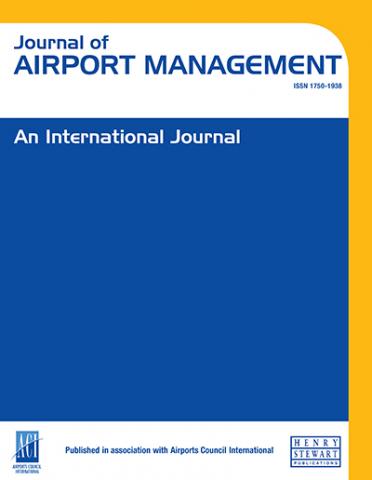"Corporate Real Estate Journal is a definitive source for the latest research-based thinking and knowledge in corporate real estate. Everyone wanting to keep up with the latest thinking needs to include this journal within their regular learning."
How Orlando International built passenger experience and technology into its new South Terminal Complex
Click the button below to download the full text of the article.
Abstract: In the opening years of the 21st century, the City of Orlando transformed itself into one of the premier destinations in the United States. Fuelled by its innovative entertainment and theme-park industry, Orlando expanded steadily into a balanced mix of research and development, aerospace, information technologies and healthcare and tourism, augmented by a growing population and attractive environment. The Orlando International Airport reflects these trends, and after several initiations in the development of its south campus, which were deferred by economic downturns, the Greater Orlando Aviation Authority (GOAA) realised sufficient, sustained traffic growth and commenced the planning of a South Terminal Complex in 2012. As airport technological advancements exploded in the years following 2001, GOAA imagined the new South Terminal facilities to be not only state-of-the-art, reflecting the vibrancy and hospitality of Central Florida, but also incorporating technologies seen only in the world’s most visionary airports. Pivotal to the South Terminal vision was the elevation of the passenger experience, known by GOAA and the Orlando community as The Orlando Experience, to a new world-class level. Achieving this vision within the many practical boundary conditions that face airports everywhere — efficiency of movement, cost management, operating flexibility for air carriers etc — demanded a novel approach to terminal development. GOAA undertook a conceptually simple but rarely practiced programme to create a practically remarkable passenger facility. This paper examines the background, approach and delivery of GOAA’s successful programme, focusing on integrating technological components and innovations into a large capital programme. Also, while technology and innovation have become the handmaidens of elevated passenger experience for airports, rarely have they been built into the design and construction of a new facility at the scale of Orlando.
Keywords: airport development, airport technology, Orlando International Airport, multimedia systems, airport design, airport construction, innovation, airport customer experience
Mark W. Birkebak, AIA, NCARB, is the Director of Engineering for the Greater Orlando Aviation Authority. He has 39 years of experience in the design and construction of a wide variety of facilities, both public and private. His professional experience includes airport terminals, intermodal terminals, roadway, runway, highway bridges, utilities, complex building systems (including baggage), public building and a wide variety private sector projects. He has worked at the Orlando International Airport for over 25 years. He oversees the programme management and design of GOAA’s capital improvement programmes (CIPs), which includes significant large programmes such as the South Airport Automated People Mover/Intermodal Transit Facility (APM/ITF) development and the new South Terminal C Program as well as coordinating the design efforts of the Virgin Trains USA rail system on the authority’s property, which will connect Miami with Orlando. Mark, AIA, NCARB, is a registered Architect in Florida. He graduated from the University of Kentucky in 1981 with a Bachelor of Architecture.
Dave A. Kipp is Vice President of Technology Services at Burns Engineering — a nationally respected provider of specialised airport engineering services. Dave supports the company’s mission to provide Burns’ aviation clients with integrated and customised designs that ensure safe, comfortable and efficient passenger travel. For 30 years, he has devoted his professional career to the development of technology systems to support airports’ infrastructure needs. Dave’s experience includes critical infrastructure protection, information technology strategic planning and engineering, mission critical facility development and special systems. He has managed numerous large technology infrastructure projects in the United States, Middle East, Africa and Asia, and is a recognised contributor to the fields of aviation technology and public security. Dave holds degrees from the University of Kansas (BS Mechanical Engineering) and the University of Cincinnati (MS Aerospace Engineering), and is a professional engineer in several states. He has served on the board of directors of the Airport Consultants Council and the Airports Council International World Business Partners.



